Irish soda bread is a quintessential treat for celebrations like St. Patrick’s Day and a comforting addition to family dinners or weekend brunches. As a quick-bread recipe, it requires very minimal kneading and combines the wholesome goodness of buttermilk with the subtle sweetness of optional raisins. Its relatively short preparation time makes it an ideal choice for anyone who wants fresh bread without the extensive time commitment often associated with traditional bread. The simplicity of using baking soda as the leavening agent, reacting with buttermilk, is key to the bread’s unique texture and flavor, ensuring a beautifully risen loaf with minimal effort.
Why You’ll Love This Recipe
- Ready in under an hour, perfect for busy schedules.
- Delicious with or without raisins.
- Made with readily available, minimal ingredients.
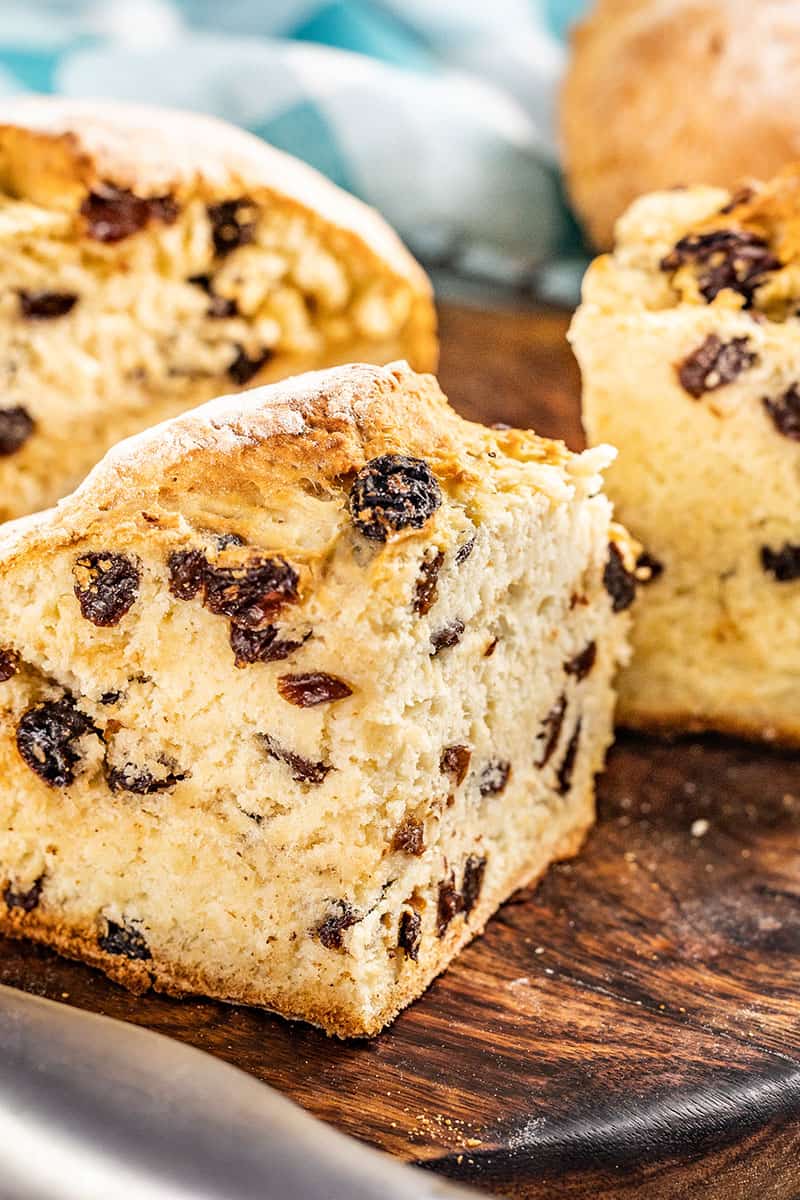
Irish Soda Bread Ingredients & Substitutions
- All-purpose flour: Provides structure to the bread. For a healthier option, use half whole wheat flour.
- Baking soda: Acts as a leavening agent, reacting with buttermilk to help the bread rise.
- Salt: Enhances the overall flavor of the bread. You may reduce salt as desired.
- Buttermilk: Reacts with baking soda for leavening and adds a slight tang.
- Raisins (optional): Add a sweet, chewy texture. Feel free to substitute with dried cranberries or omit altogether.
Frequently Asked Questions
Yes, it can be made a day ahead and still taste fresh.
Irish soda bread is a quintessential quick bread, leavened with baking soda instead of yeast for faster preparation. This method enables the bread to be made and baked in a fraction of the time needed for traditional yeast breads.
Yes, just add a tablespoon of lemon juice or vinegar to regular milk.
Absolutely, it’s delicious either way!
Minimal kneading is required, just enough to form a smooth ball.
Irish soda bread’s origins are deeply rooted in 19th-century Ireland, a time marked by economic hardship, particularly during the Great Famine. The introduction of baking soda to Ireland in the late 1830s was a game-changer in home baking. It provided a low-cost and accessible alternative to yeast, which was expensive and hard to come by. This shift was crucial as it allowed for the use of soft wheat flour, prevalent in Ireland but unsuitable for yeast-leavened bread. Traditionally made with just four ingredients – flour, baking soda, salt, and sour milk (or buttermilk) – Irish soda bread was a simple, economical solution for many Irish households.
A Note on Baking Soda
Baking soda is the key leavening agent in Irish soda bread, reacting with the acidic buttermilk to create the rise necessary for a light and airy loaf. It’s crucial to use fresh baking soda to ensure your bread rises properly. Baking soda that has gone stale or is past its prime won’t produce the necessary chemical reaction.
To test if your baking soda is still active, simply add a teaspoon to a small bowl of vinegar. If it bubbles vigorously, it’s fresh and good to use. If the reaction is sluggish or nonexistent, it’s time to replace your baking soda to guarantee the best results for your bread.
Baking Equipment Options
- Baking Sheet: A simple baking sheet is most commonly used and works wonderfully. It allows for even heat distribution, ensuring the bread cooks uniformly.
- Cast-Iron Skillet: For those who want to mimic the traditional method, a cast-iron skillet is a great option. It retains heat well and can give the bread a beautifully crisp crust.
- Dutch Oven: If you prefer a softer crust, baking the bread in a Dutch oven with the lid on can create a steamy environment, similar to the bastible, resulting in a tender crust.
Regardless of the pan used, lining it with parchment paper can prevent sticking and make for easy cleanup.
Serving Suggestions
Irish soda bread pairs wonderfully with soups and stews, making it a great addition to family dinners, potlucks, or gatherings. It’s also delightful when served with butter and jam for a simple yet satisfying breakfast or snack.
Create an entire St. Patrick’s Day feast by serving your soda bread…
- As a Starter: Serve warm slices of Irish soda bread as an appetizer, accompanied by a selection of Irish cheeses like Dubliner and Cashel Blue, and a side of apple chutney or fig jam. This sets the tone for a traditional Irish feast.
- With the Main Course: Pair the bread with classic St. Patrick’s Day dishes such as corned beef and cabbage or Irish stew. The bread’s dense texture makes it ideal for soaking up broths and gravies, enhancing the overall dining experience.
- Create a Ploughman’s Lunch: Combine slices of soda bread with cold cuts, more cheese, pickles, and hard-boiled eggs for a traditional Irish ploughman’s lunch, perfect for a St. Patrick’s Day picnic or casual gathering.
- As Part of a Full Irish Breakfast: If you’re celebrating St. Patrick’s Day from morning, include Irish soda bread in a full Irish breakfast, alongside eggs, bacon, black and white pudding, grilled tomatoes, and mushrooms.
Troubleshooting
- If the bread is too dense, ensure not to over-knead the dough.
- For a too-sticky dough, gradually add a bit more flour until the desired consistency is reached.
- If the bread isn’t rising, check that the baking soda is fresh and active.
Tips From the Chef
- Preheat your oven for at least 15 minutes before baking.
- Use cold buttermilk for the best reaction with baking soda.
- Score the top deeply to help the bread cook evenly.
- Let the bread cool on a wire rack to prevent a soggy bottom.
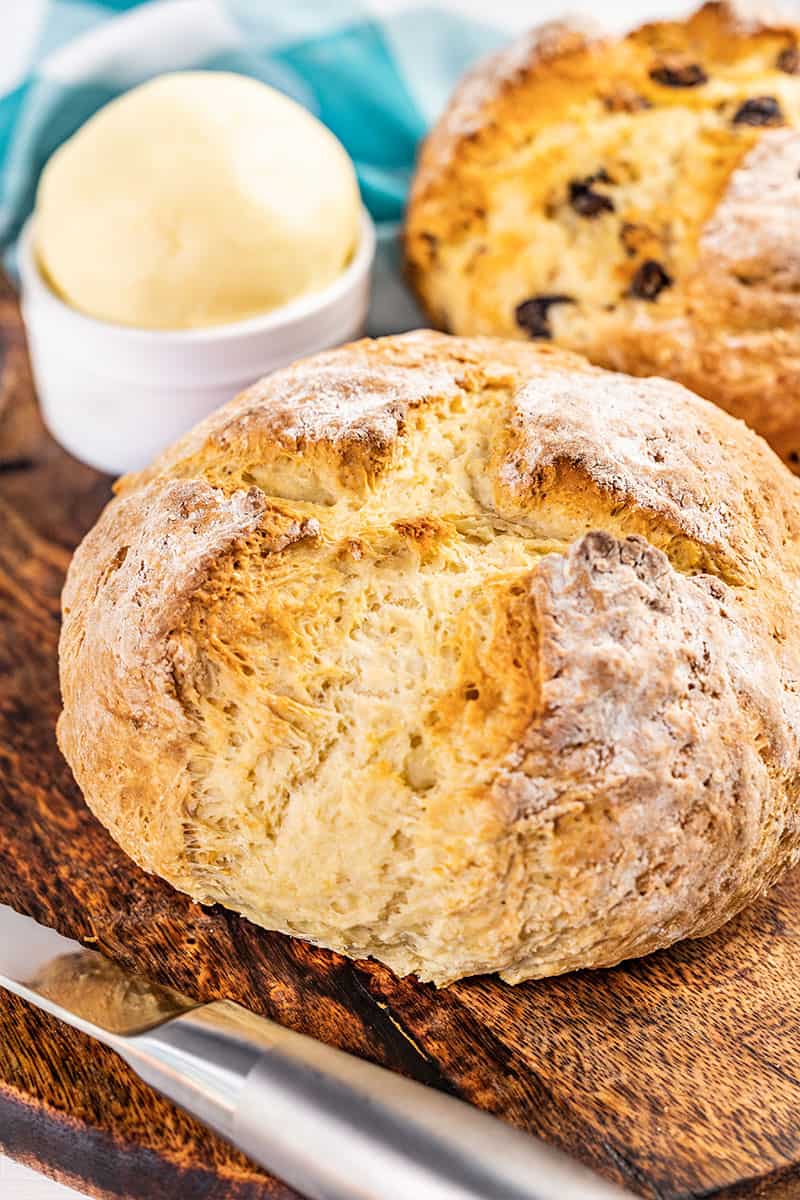
Irish Soda Bread Readiness Indicators
- Golden Brown Crust: The bread should have a uniformly golden color.
- Hollow Sound: When tapped on the bottom, it should sound hollow.
- Firm, Yet Springy Texture: The loaf should feel firm to the touch, but still have a bit of springiness.
Storage Instructions
- Room Temperature Storage: Store in an airtight container for up to 3 days.
- Freezer Storage: Wrap tightly and freeze for up to 3 months. Thaw at room temperature.
- Reheating: Warm in a 350-degree Fahrenheit oven for 10 minutes if desired.
More Dinner Accompaniment Bread Recipes
Flaky Old Fashioned Biscuits
25 mins
The Best Homemade Dinner Rolls Ever!
3 hrs 12 mins
Homemade Breadsticks
1 hr 18 mins

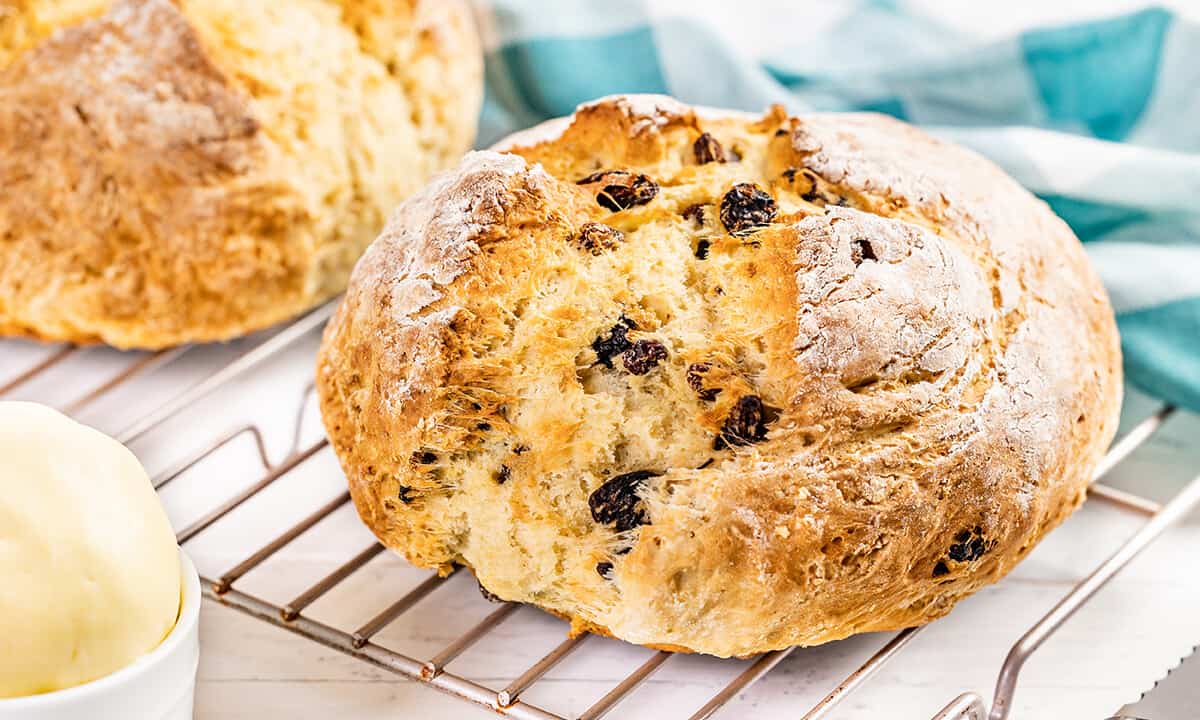
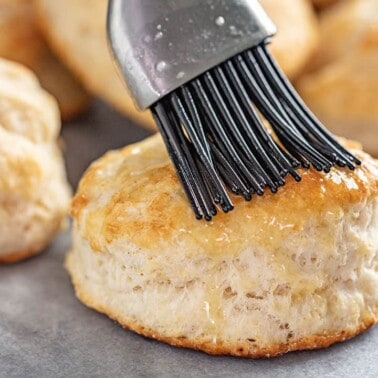

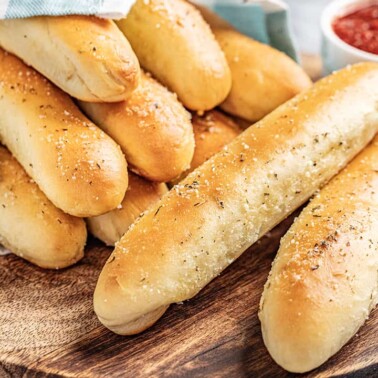
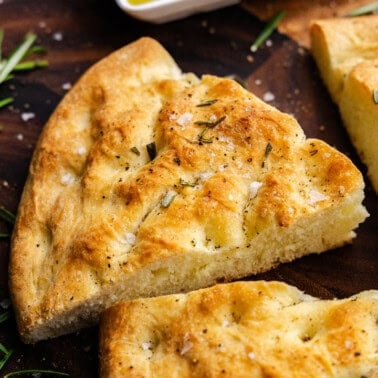
i used 2 cups buttermilk in error, it still came out good , less dense
I sm not a bread maker, but I will try this one. Wish me luck!
You’ve got this!
If you use a cast iron pan, do you need to oil or butter it?
Cast iron pans that are properly seasoned do not need to be greased.
My first time making soda bread and it was delicious! So much better than what you get in the store! Thanks for a great simple recipe!
Hi. I made this today to pair with the slo cooker stew I made. It came out perfectly crusty and delicious. Hubby and I loved it with butter… I can eat it on its own, so good! Quick and easy too… Thank you ❤️
I added the raisins and the full 2 teaspoons of salt. This recipe is perfect. If you want actual Irish soda bread, use the 2 teaspoons.
I suspect the people who thought it was too salty didn’t use the raisins. You could reduce the salt or add a couple tablespoons of sugar. A complete lack of sweetness would make it seem salty.
Recipe was easy, and was delicious. It was a wonderful addition to my traditional Irish meal. My guests were impressed. I loved the flavor, and will definitely make this bread again, but will use less currents.